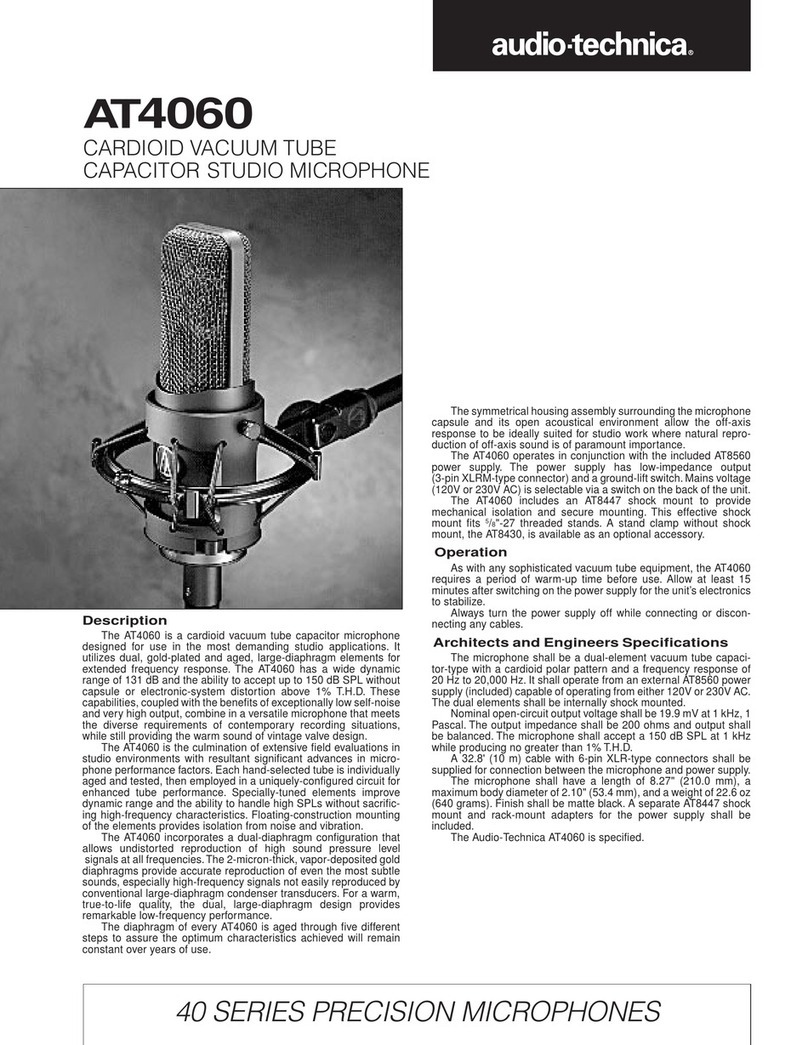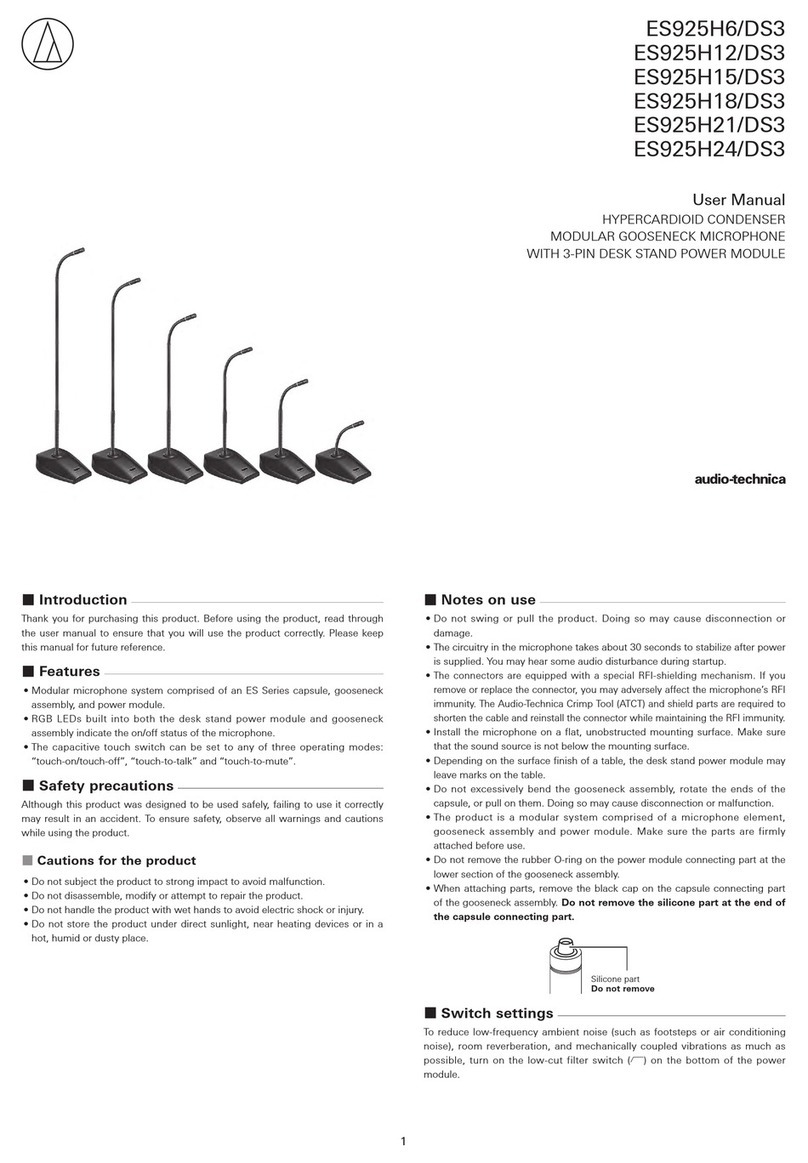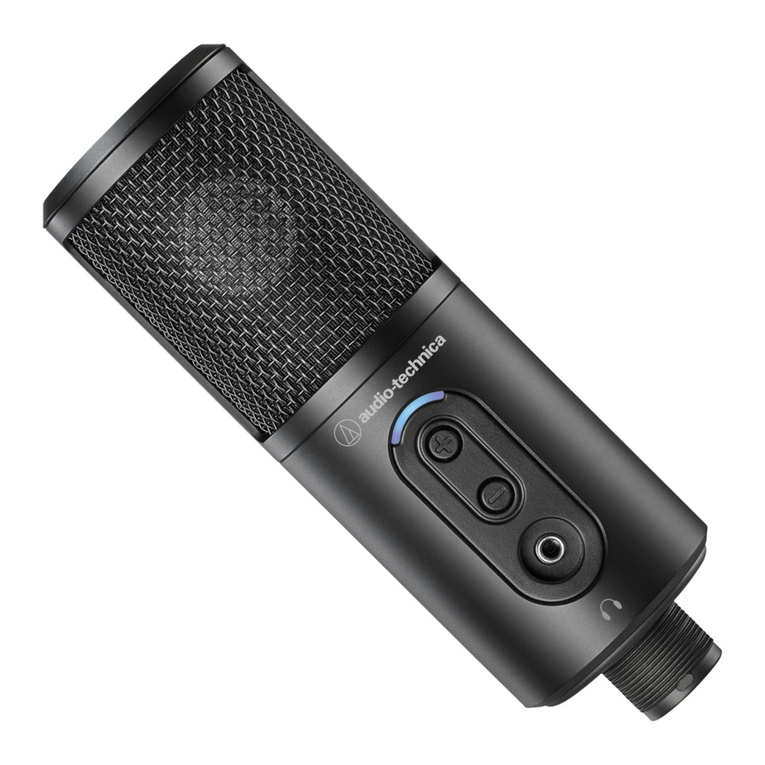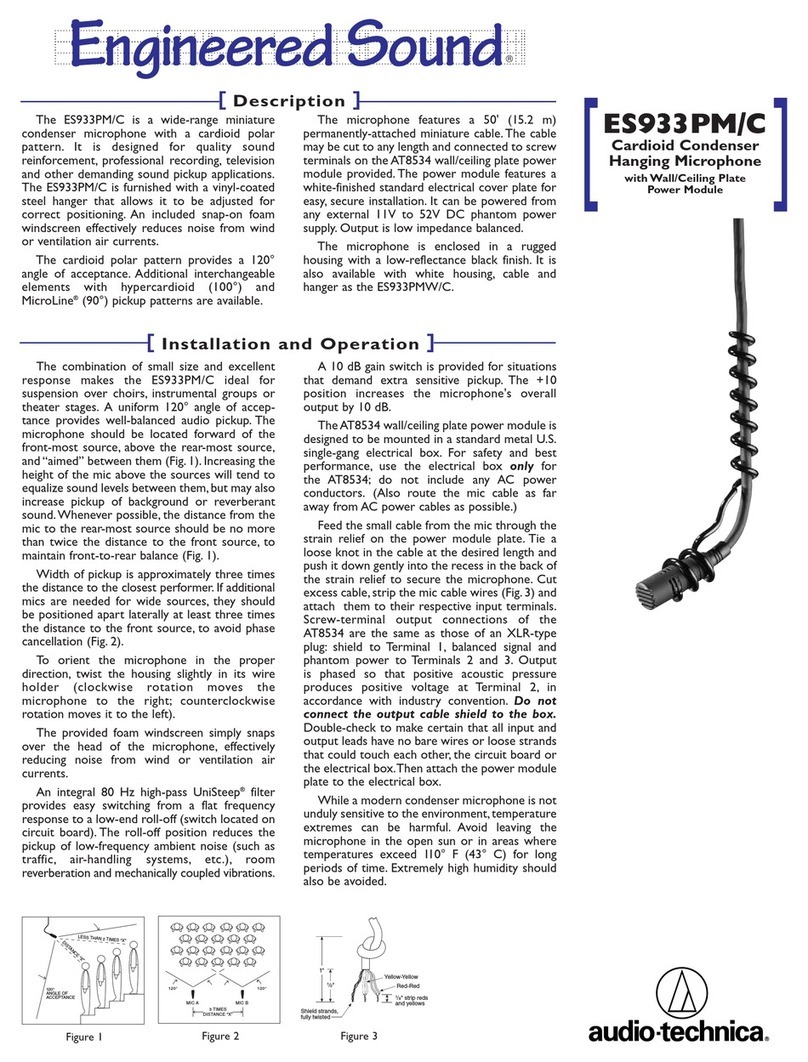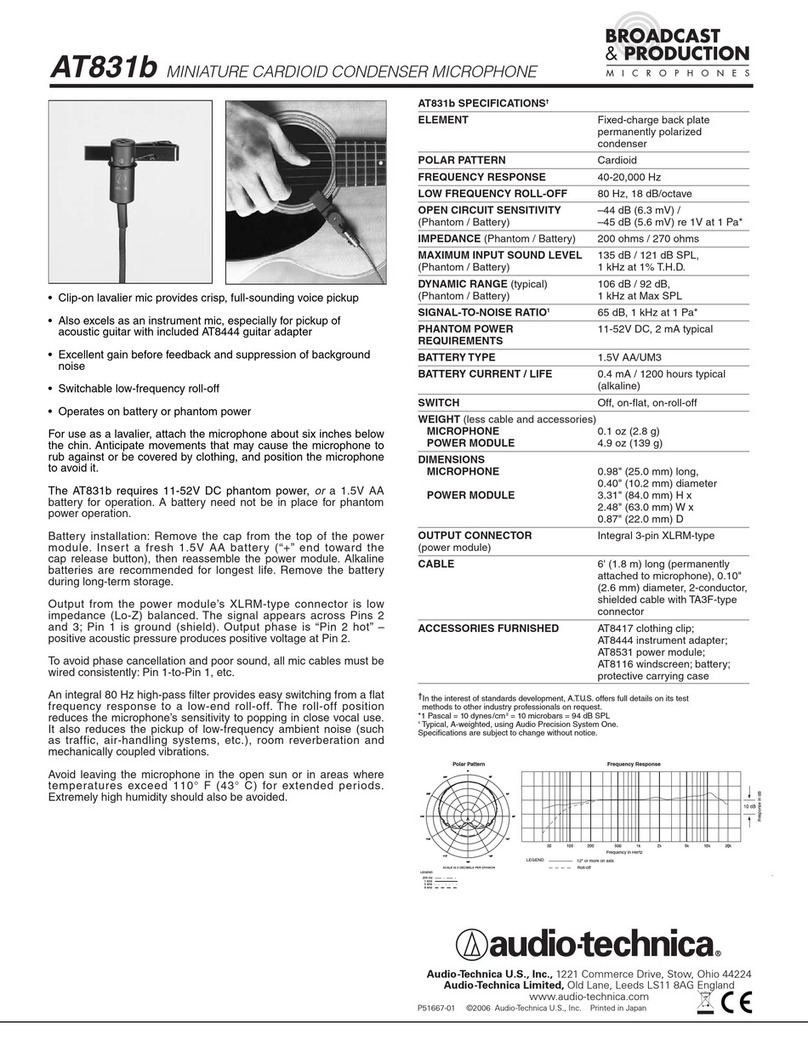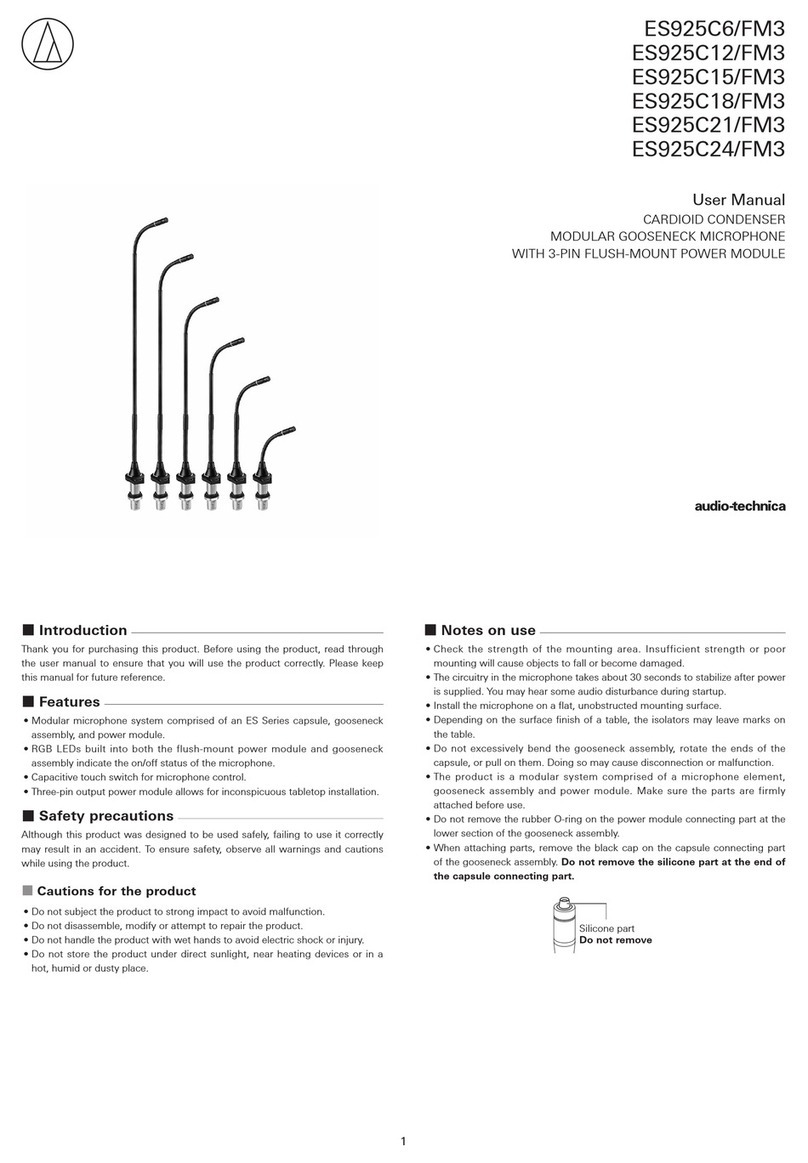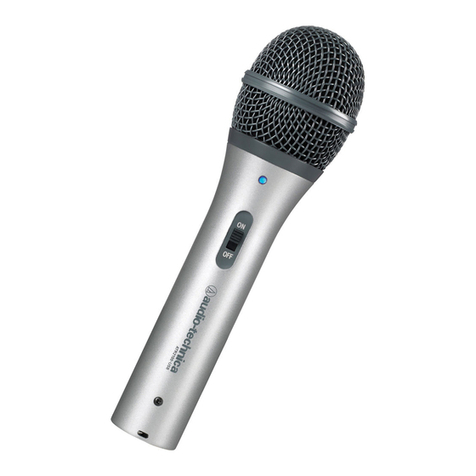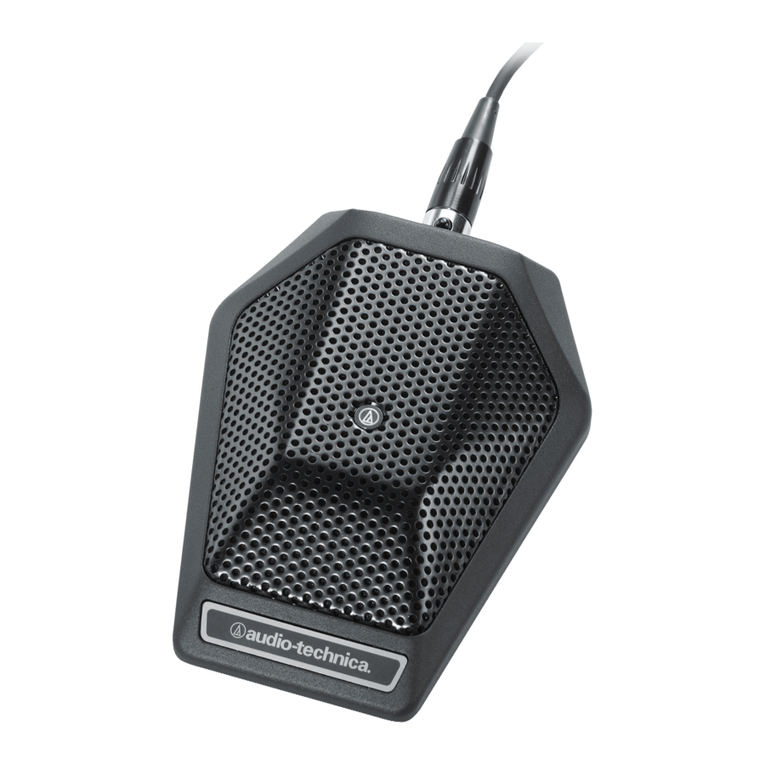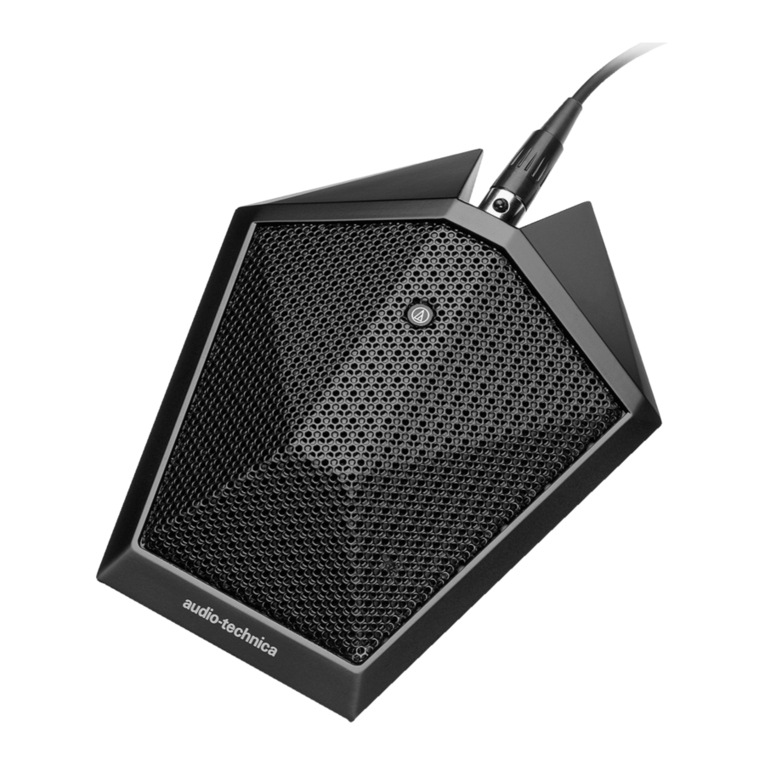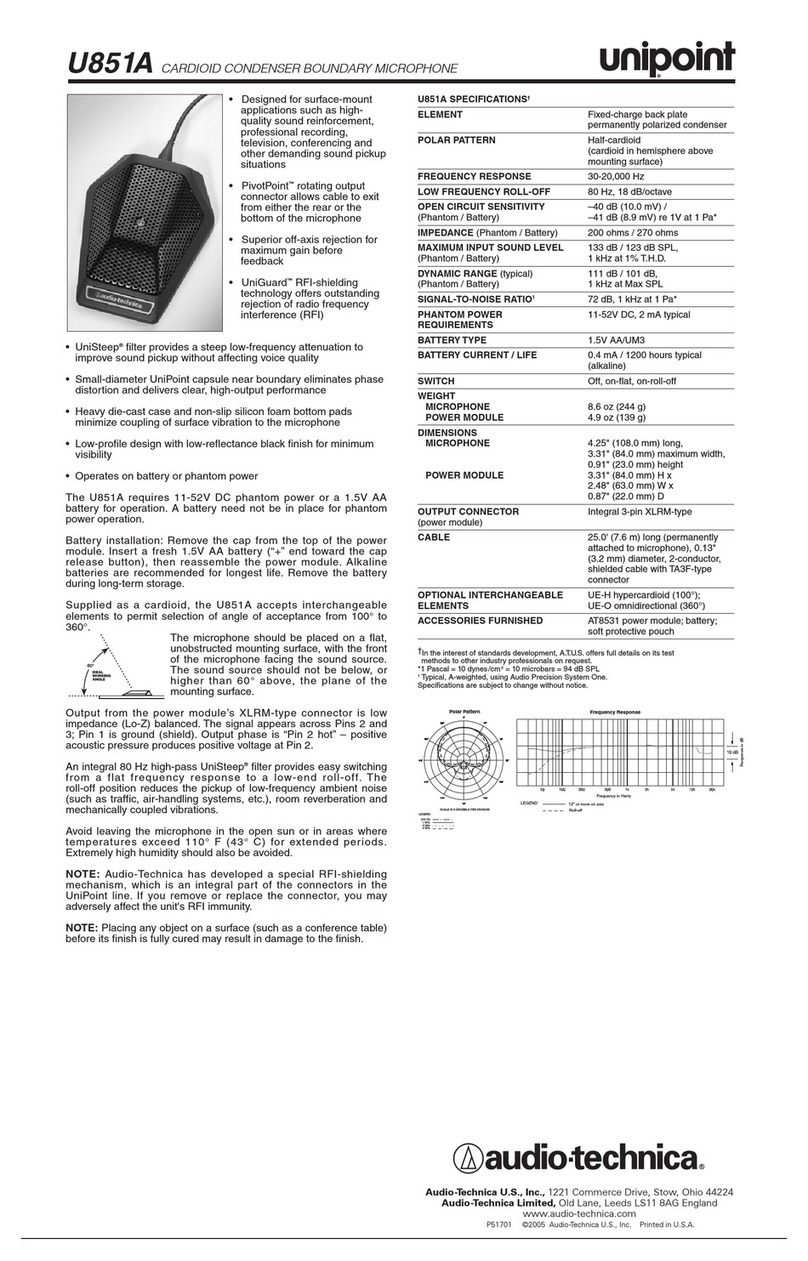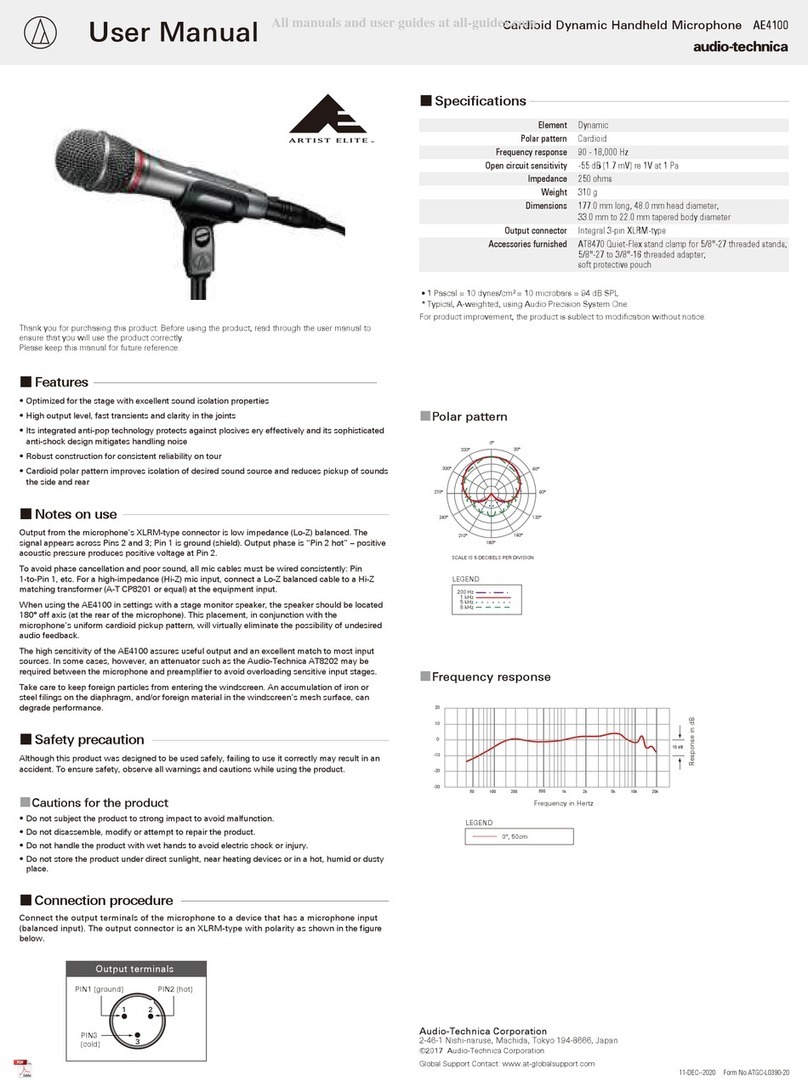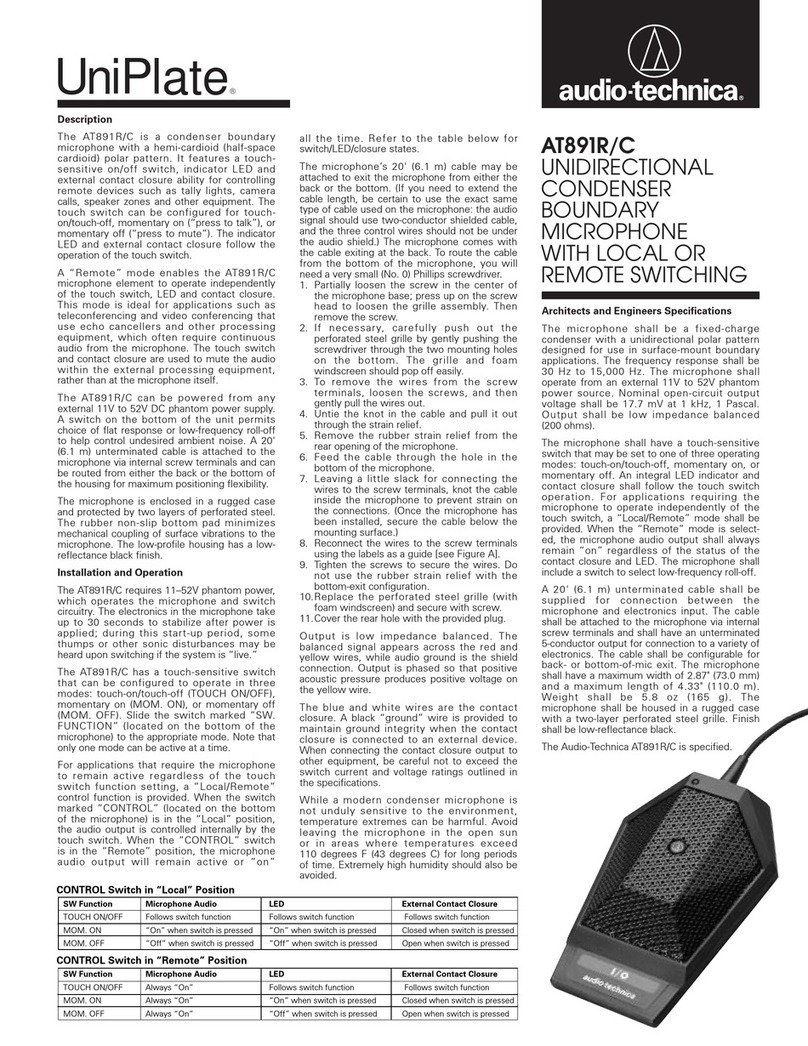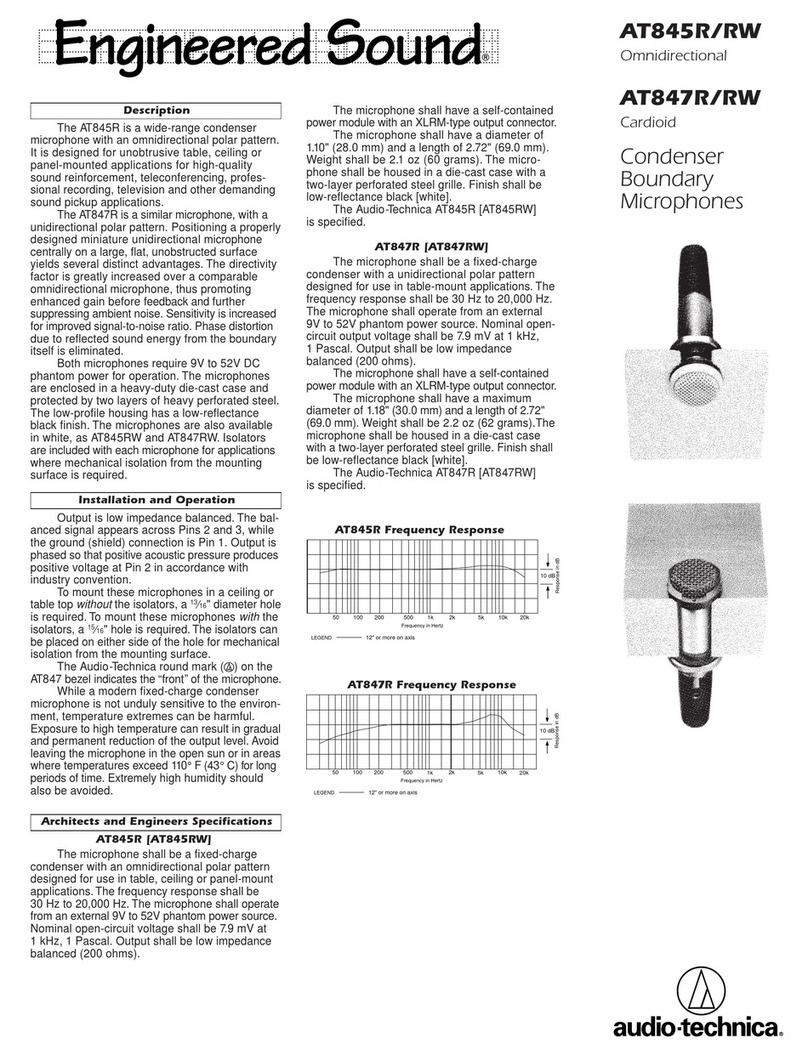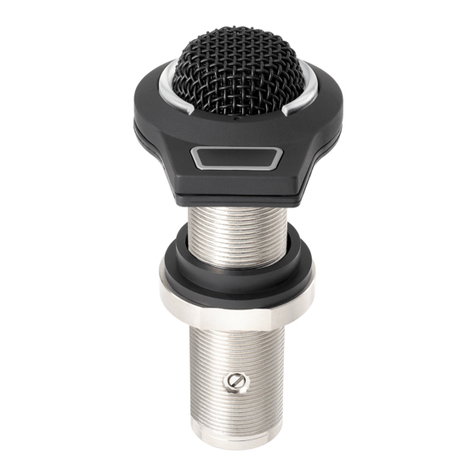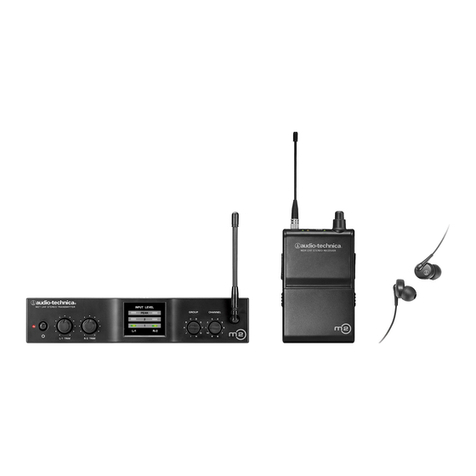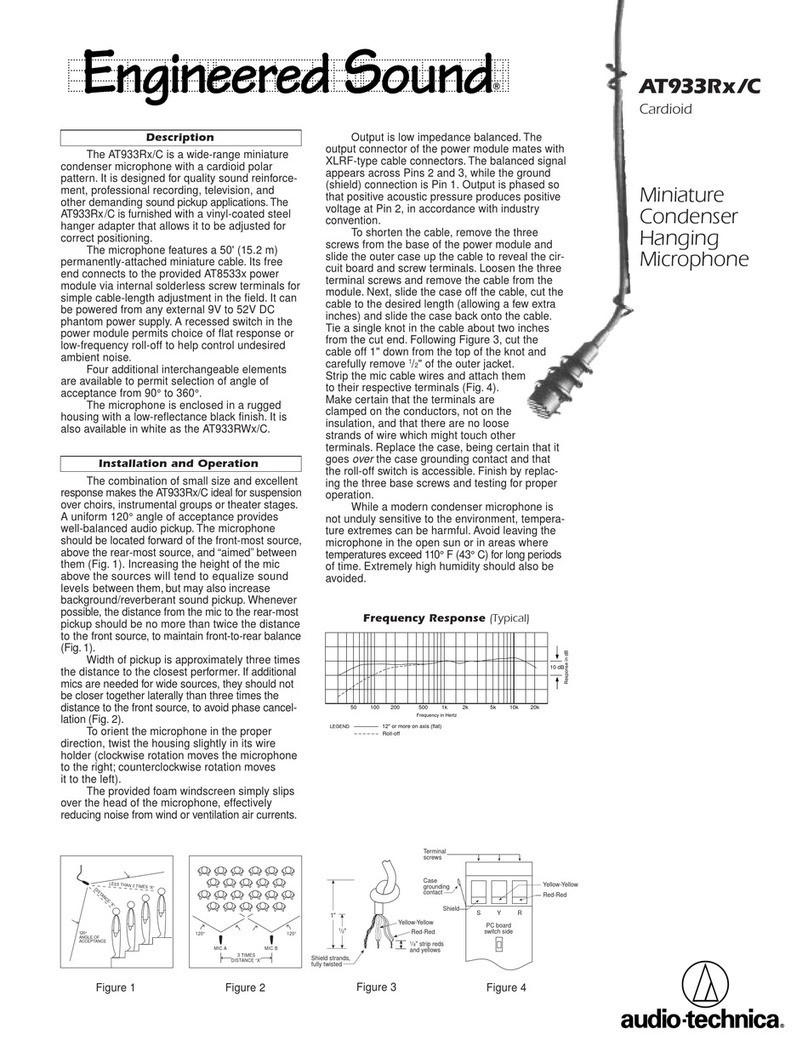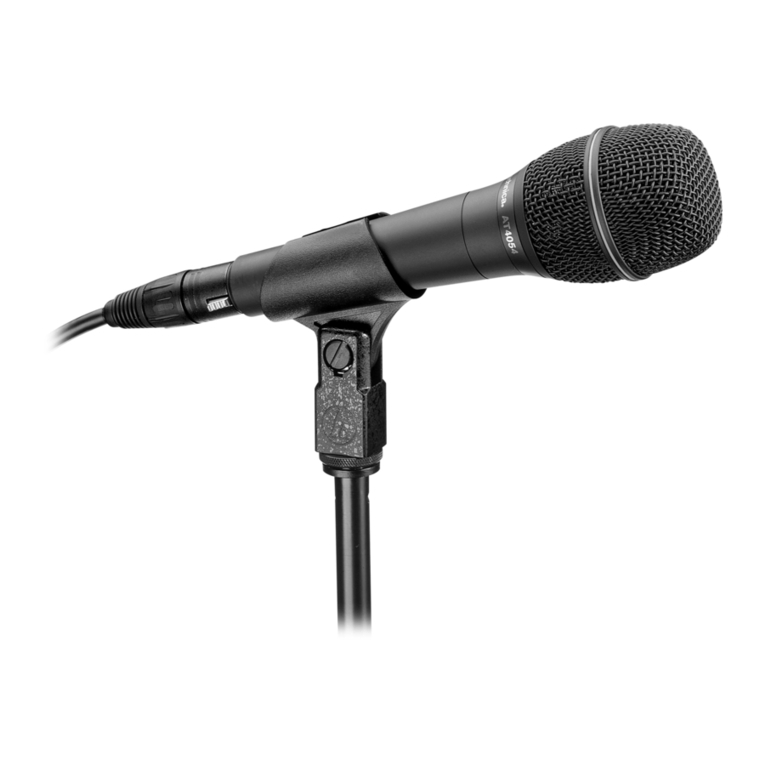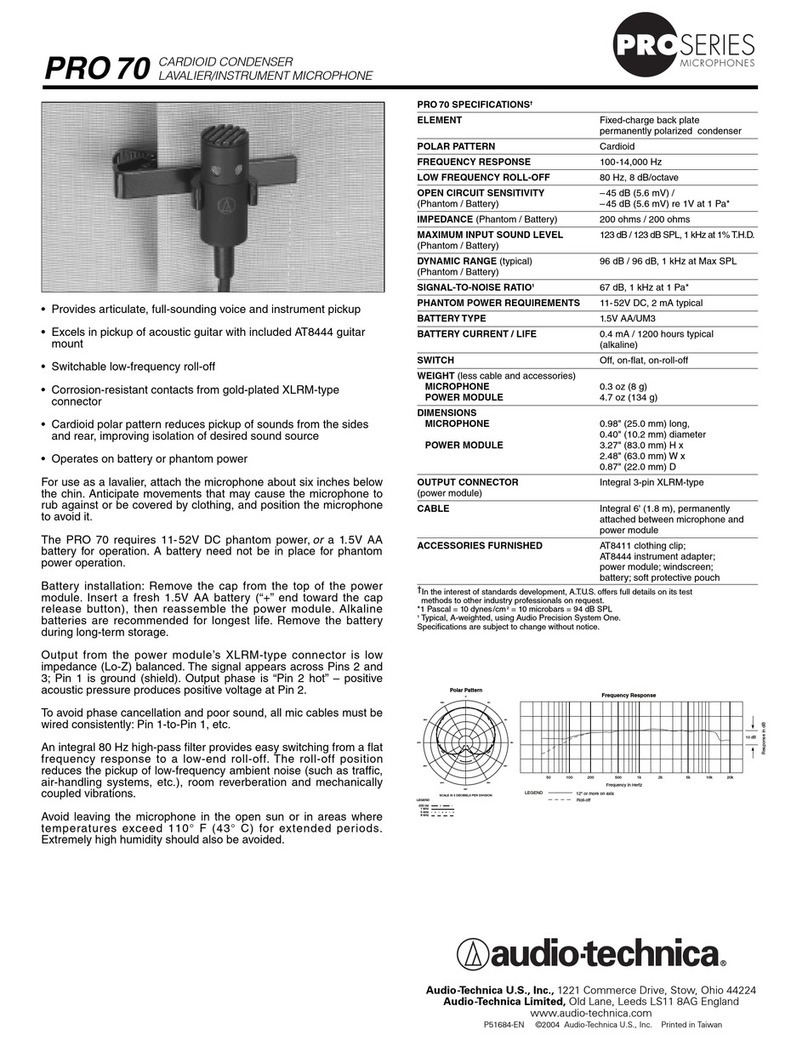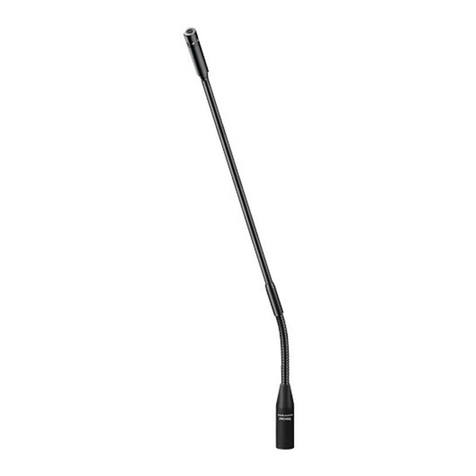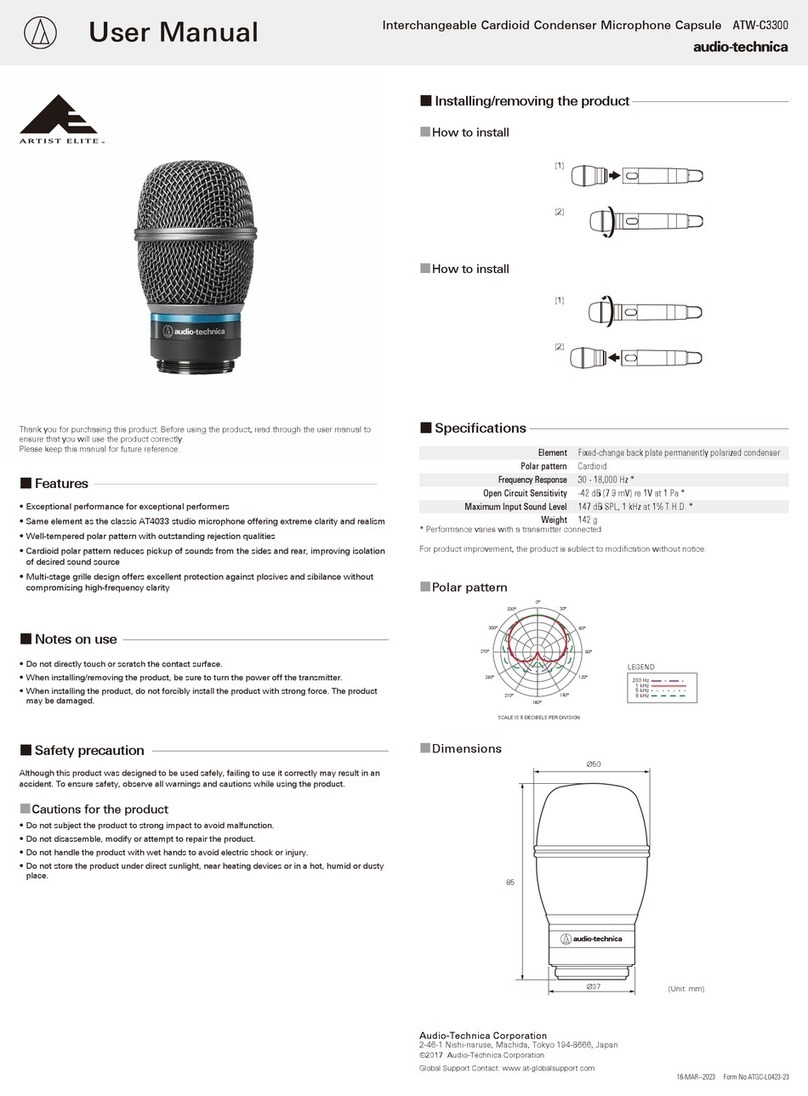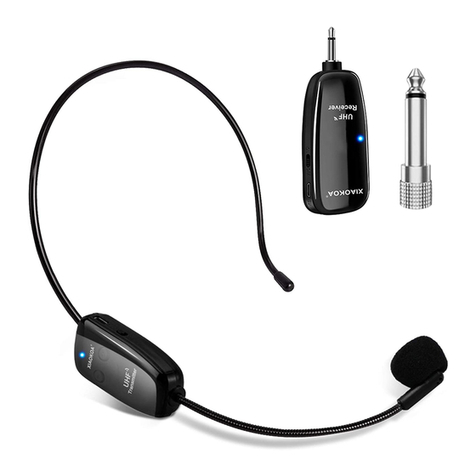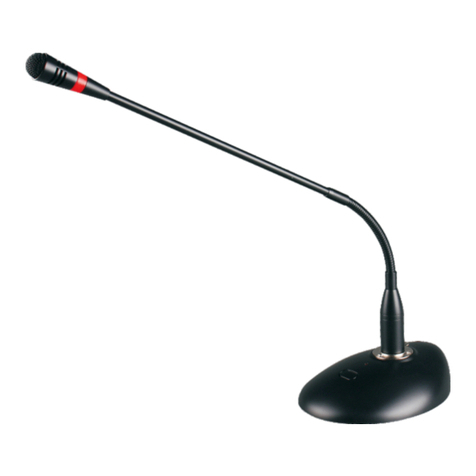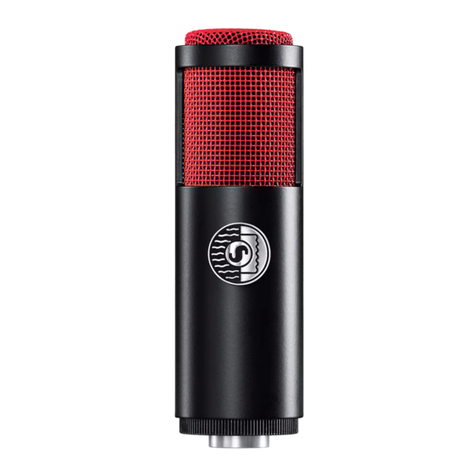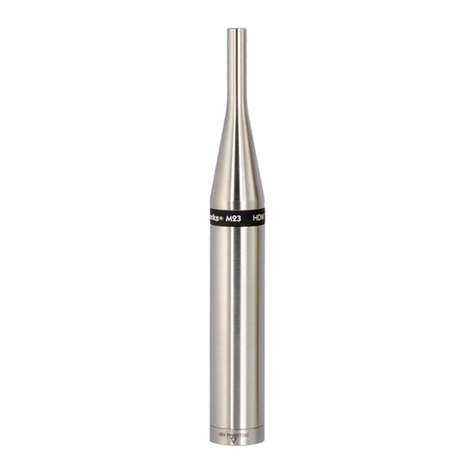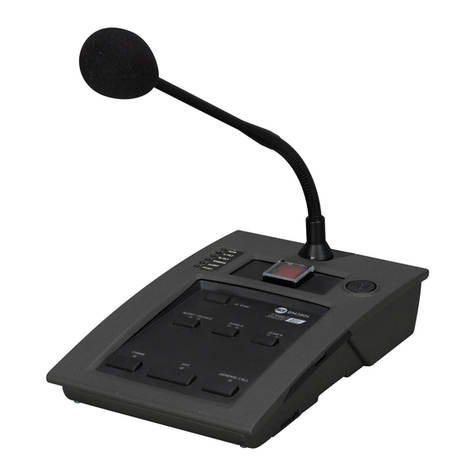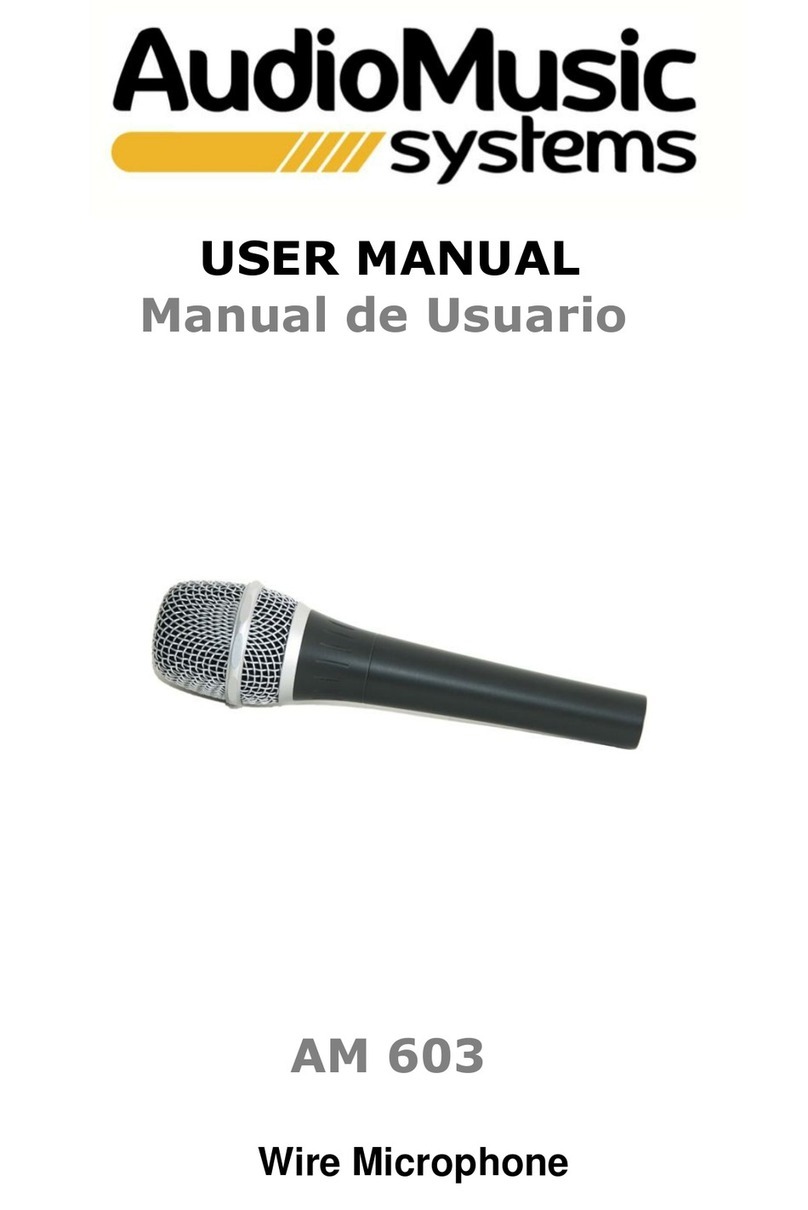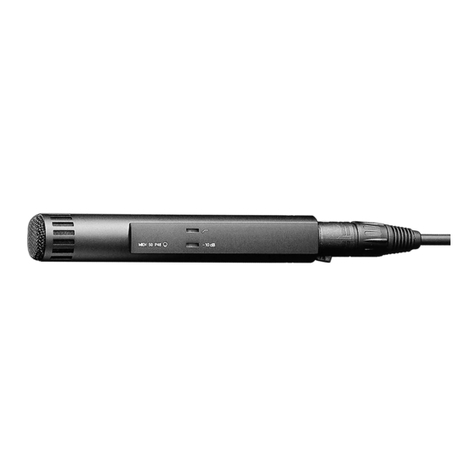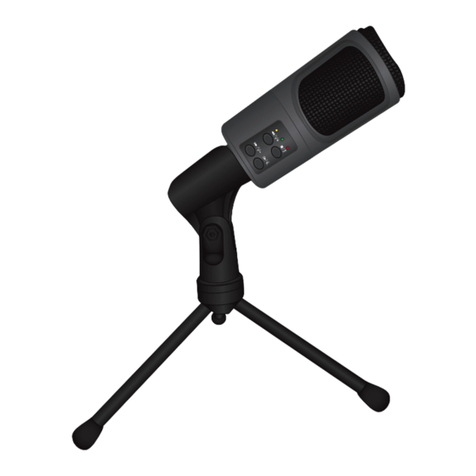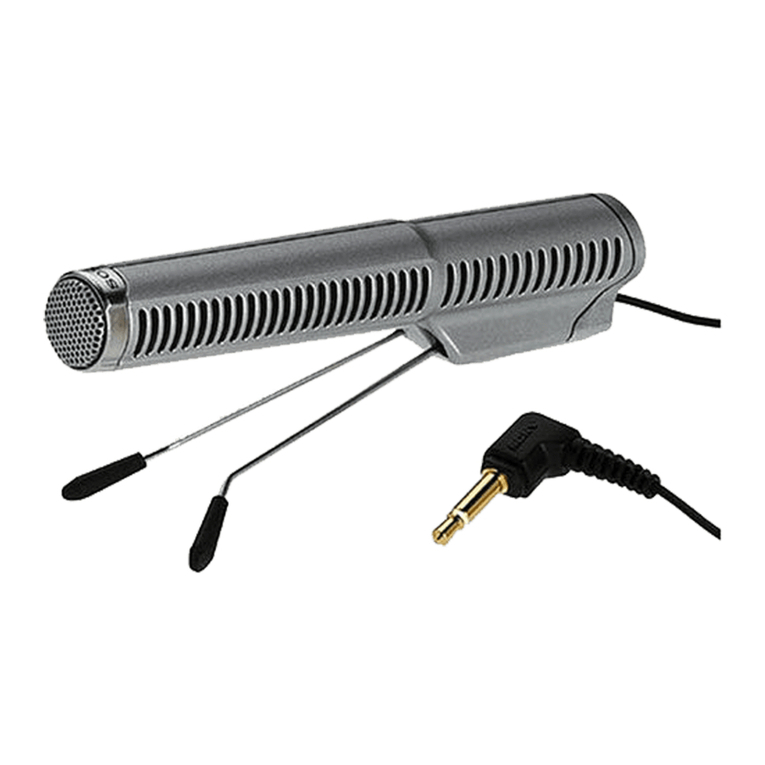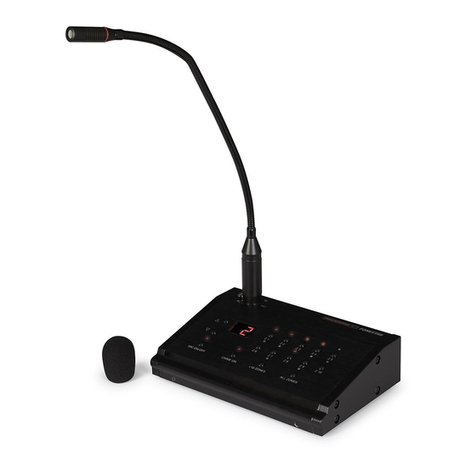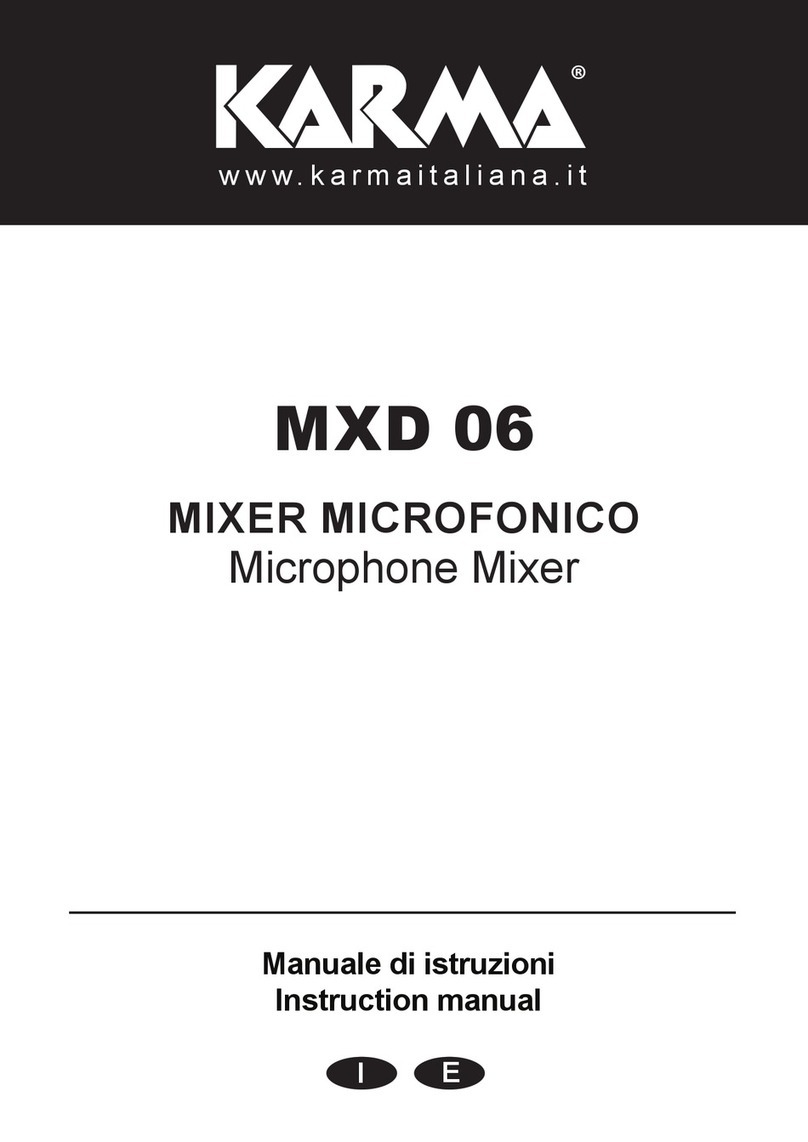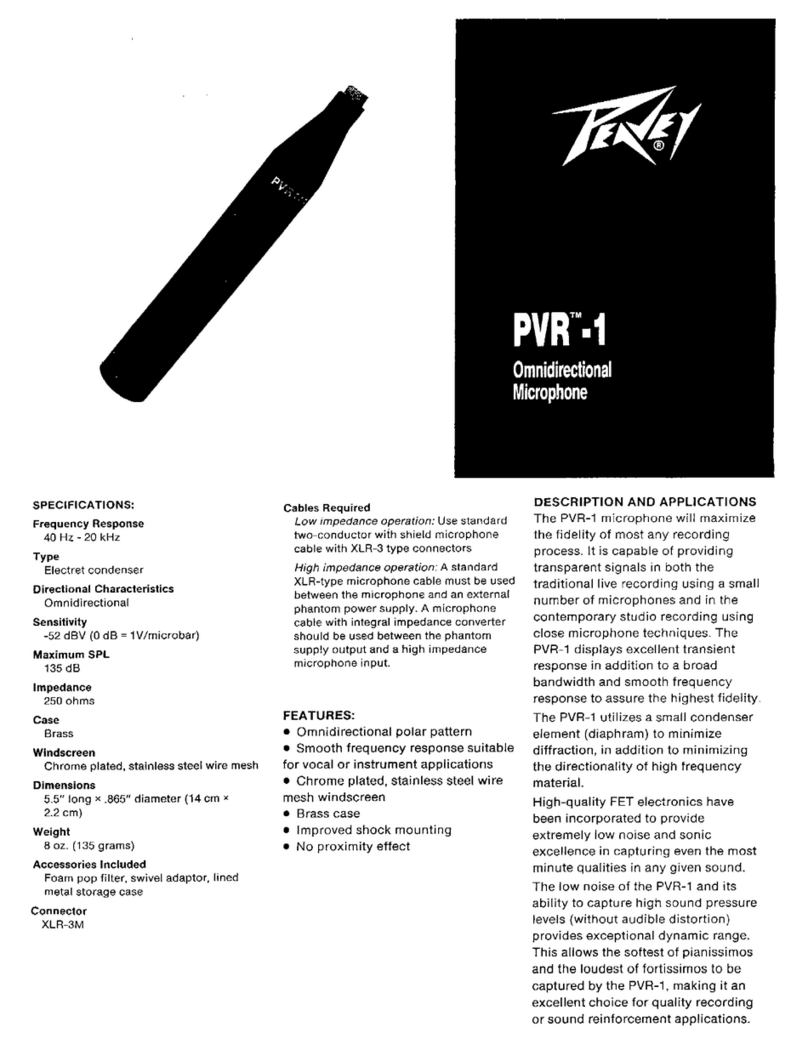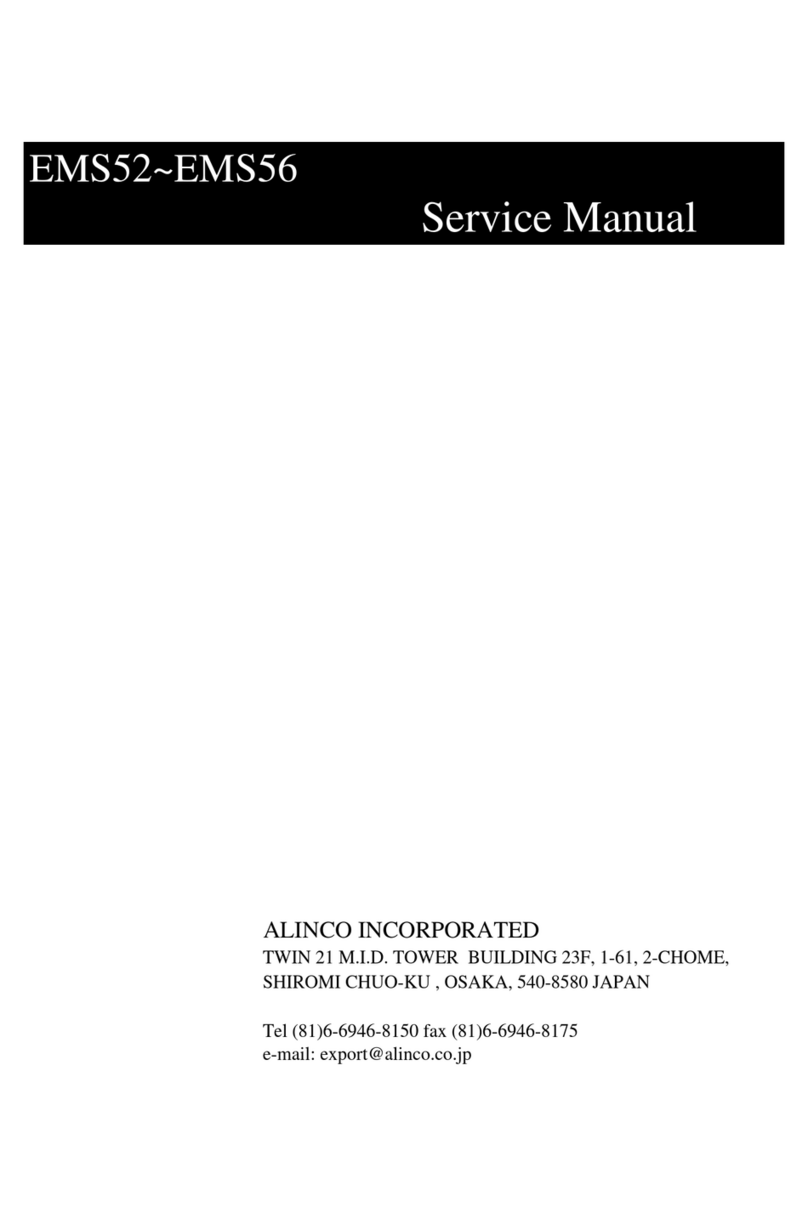SPECIAL PURPOSE MICROPHONES
Description
The AT825, an X/Y stereo condenser micro-
phone with full mono compatibility, has been
designed for broadcast and professional
recording use. It is also well-suited for DAT
field applications. Equally appropriate for
hand-held or camera-mount use, the AT825
microphone provides full, natural stereo ambi-
ence in a compact, lightweight design.
Operators working on hectic ENG assignments
will discover the AT825’s ability to readily
respond to the typical configuration for broad-
cast audio. This includes true stereo ambience
(crowd noise, music, etc.) mixed with narrative
talent on a center mono channel. Under a
deadline crunch or in single-take situations,
sound technicians will also appreciate the
AT825’s excellent channel separation.
The AT825 is equipped with a pair of wide-
range, closely-matched, optimally-positioned
miniature condenser cardioid elements.
Because the polar response vs. frequency of
these elements is so uniform, the AT825 pro-
vides the spatial impact and realism of a live
sound field, while simultaneously remaining
full and uniform when operating in mono
(L+R). Consistently natural-sounding response
is maintained over an arc of approximately 220°,
and the L+R mono polar pattern is virtually
free of lobes and comb effects.
The AT825 takes full advantage of
Audio-Technica’s condenser technology, pro-
viding an ultra-low-mass diaphragm for superb
transient response. Engineered with a perma-
nently-charged fixed back plate, the element
features a diaphragm reduced to a mere
2-micron thickness (about 0.000079"). The
results are minimal distortion, and improved
frequency and transient response. Frequency
response is smooth and peak-free over an
extended 30 Hz to 20,000 Hz range.
True to its field-ready billing, the AT825 features
a switchable low-roll-off filter, windscreen,
and two-way power. An external 5-52V DC
phantom power supply, or an internal 1.5V
AA/UM3 battery (included), may be used. On
battery, current demands are so low that battery
life exceeds 1,000 hours in normal intermittent
use. The battery is automatically bypassed when
phantom power is present. The supplied 16.5'
shielded cable features a five-pin XLRF-type
input connector and two standard three-pin
XLRM-type output connectors. A snap-in
microphone stand adapter is included for
mounting to any stand with 5/8"-27 threads. A
compact, soft vinyl pouch is provided to hold
and protect the microphone and accessories.
Operation and Maintenance
Before attempting operation, if battery opera-
tion is desired, install the battery. Unscrew
the upper section of the handle of the micro-
phone and slide it down to reveal the battery
compartment. Place battery in handle
compartment, then reassemble the microphone.
Be certain to observe battery polarity as
indicated (+ end forward). Replacement AA
batteries are readily available. While standard
carbon-zinc batteries will operate the micro-
phone satisfactorily, alkaline or mercury
batteries are preferred for longer service life.
Only “leakproof” batteries should be used.
The two stereo outputs are low impedance
balanced. The balanced signals appear across
Pins 2 and 3 for the left channel and Pins 4
and 5 for the right channel. The ground
(shield) connection for both channels is Pin 1.
Output is phased so that positive acoustic
pressure produces positive voltage at Pins 2
and 4, in accordance with industry convention.
By locating the AT825 near the sound source,
the stereo image width will be enhanced, but
the room ambience will be decreased.
Conversely, as the mic position recedes from
the sound source, a narrower left/right stereo
image will be achieved and more of the
“room sound” will be noted. After experimenting
with placement, operators will soon get the
“feel” of where to position the AT825 for the
best overall effect.
The high sensitivity of the AT825 assures useful
output under most circumstances, and it is
designed to provide a distortion-free signal
even in very intense sound fields. In some
cases, however, an attenuator such as the
Audio-Technica AT8202 may be required
between each microphone output and its
preamplifier to avoid overloading sensitive
input stages.
Architects and Engineers Specifications
The microphone shall be a fixed-charge
condenser with two condenser cardioid
elements in an X/Y stereo configuration. The
stereo angle shall be 110°. The frequency
response shall be 30 Hz to 20,000 Hz, and the
microphone shall have a switch for selection
of flat or low-roll-off response.
The microphone shall have a nominal
open-circuit output voltage of 4.4 mV at 1 kHz,
1 Pascal. It shall have an output impedance of
200 ohms and output shall be balanced. It
shall be capable of operating from an external
5V to 52V DC phantom power source or,
alternatively, from a 1.5V AA/UM3 battery.
The microphone shall accept a 126 dB SPL
at 1 kHz while producing no greater than
1% T.H.D.
The microphone shall include a foam wind-
screen and 16.5' shielded cable with a five-pin
XLRF-type stereo connector and two standard
three-pin XLRM-type output connectors. The
microphone shall be 8.43" (214.0 mm) long
and the head shall be 2.44" (62.0 mm) wide.
The weight shall be 8.5 oz (240 grams). Finish
shall be low-reflectance matte.
The Audio-Technica AT825 is specified.
Frequency Response
